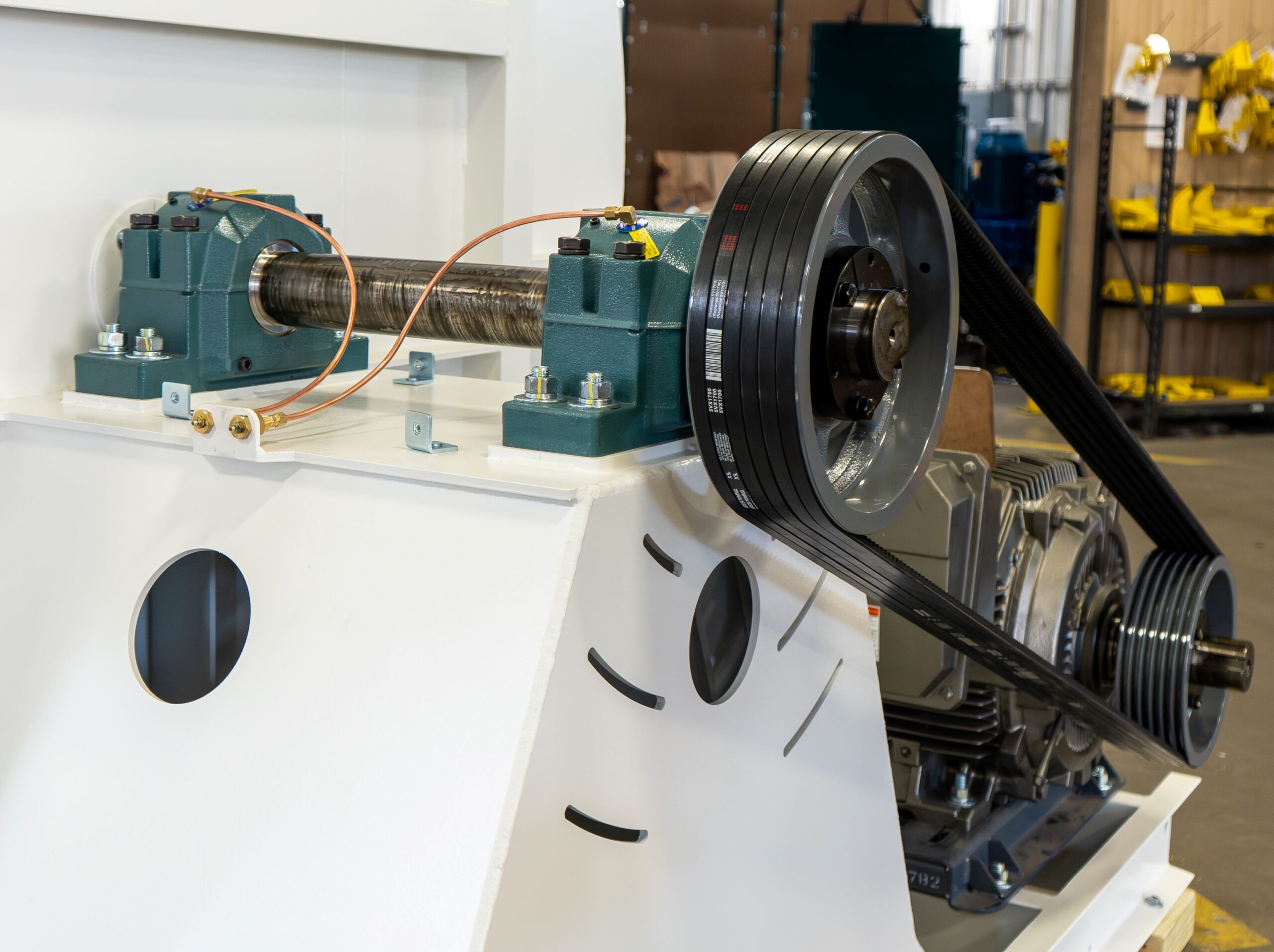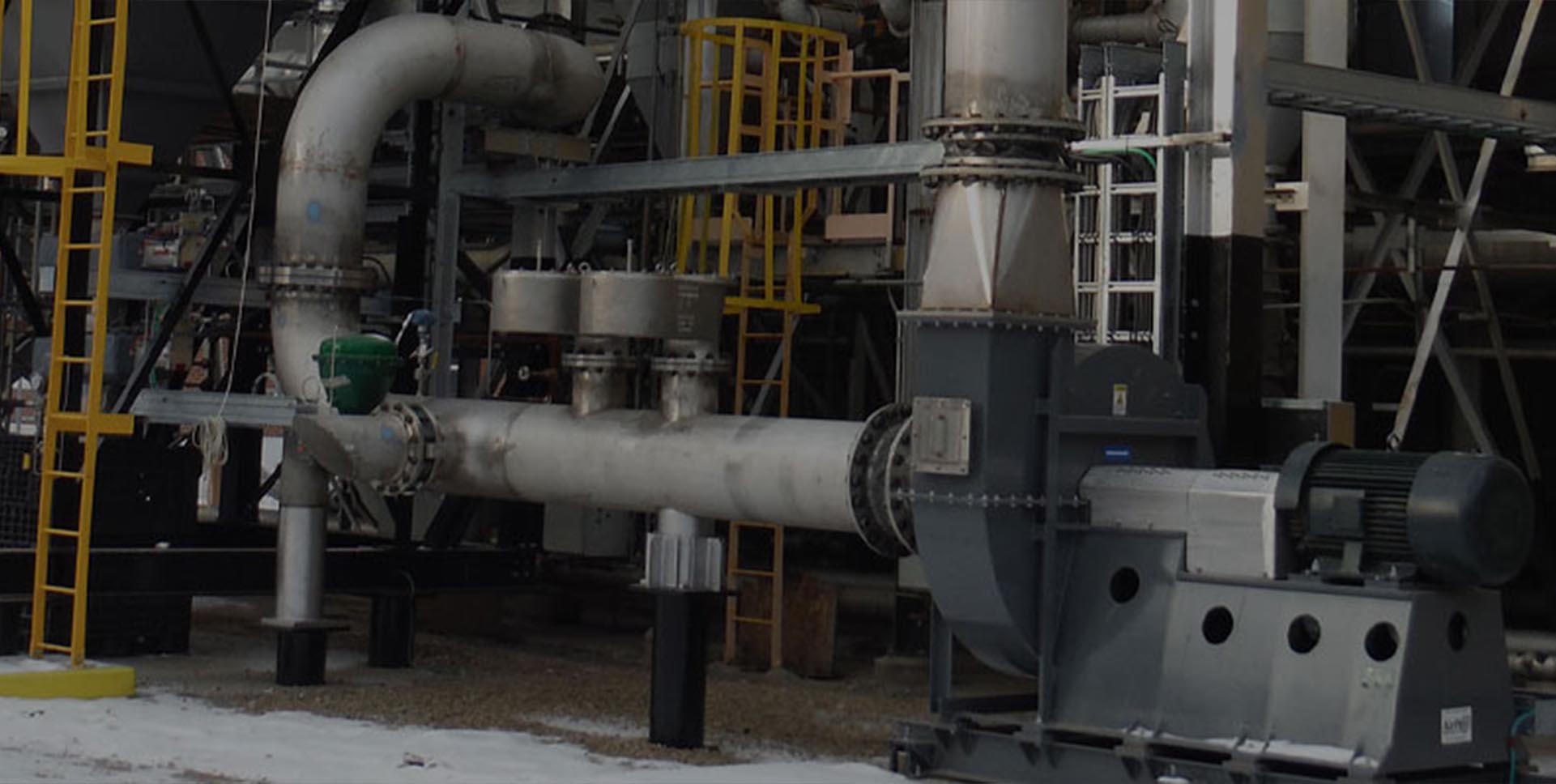We’re always looking for ways to make life easier for the people who install, maintain, and rely on our equipment every day. That’s why we’re excited to highlight our lubrication system designed specifically to reduce friction, both literally and figuratively, for service and maintenance teams.
Continue reading →Fan Maintenance
Bearings are crucial for industrial centrifugal fans, supporting the fan shaft and minimizing friction. Proper bearing selection ensures efficiency, longevity, and reliability in high-performance ventilation systems.
The Role of Bearings in Centrifugal Fans
Bearings hold the shaft in place as a fan rotates. In overhung applications, they are placed in close proximity to the wheel, placed together on the drive side of the fan housing, supporting the wheel mounted on the end of the shaft. In center-hung applications, one bearing is placed on the drive side and the other is placed on the inlet side of the fan as the wheel rotates on the shaft between the bearings.
Introducing AirPro’s new Forever Fan System—a standalone pedestal mounted vibration and temperature monitoring system our engineers developed to help end-users avoid downtime, extend the operational life of their fans, and reduce operating costs.
Reasons for Measuring a Fan
Generally, there are two reasons to measure a centrifugal fan – the user wants to retrofit the fan (or parts) or replace it with a new fan. In either case, accurate measurements are critical to replicating the system currently in place, especially if no drawing is available. If possible, separate or isolate the fan from the system to access key measurement points. If duct work on the inlet or outlet is in the way, this could impact measurement accuracy.
What is a Balanced Fan? Think “Finishing the Job.”
A balanced fan must stay below specific vibration limits for safe operation while running at full speed. Excessive vibration will decrease the life of your fan and can lead to catastrophic failure.
How to Identify and Solve Fan Vibration Problems
You may enjoy good vibrations at the beach, but fan vibration issues are no picnic. Even when they ship from the shop having been balanced like ours do, once they’re in the field, vibration problems can surface.
3 Ways to Clear Debris from an Industrial Fan
Sometimes the most simple things like cleaning get overlooked, potentially leading to many more serious issues. It’s important to properly clean a blower wheel, as material buildup on a wheel can cause vibration and damage your fan. Even “clean air” may contain various particles and debris. A simple cleaning procedure can keep your fan healthy and decrease downtime.
Industrial Fan V-Belt Installation, Alignment, and Tensioning
Many industrial fans operate using a v-belt drive. The constant motion and friction make it very important to ensure proper fan belt alignment and tension upon installation and during routine maintenance. Getting this right will help extend the life of the fan belt. Proper installation is based on the specifications in the installation and operation manual (IOM).
Check It Off. Avoid Downtime.
Wear and tear in your industrial fans and blowers is completely normal. In fact, it’s impossible to avoid, given all of the moving parts and the often abrasive or corrosive elements moving through them. But that does not need to lead to catastrophic downtime. We put together this 9-step preventative maintenance checklist for equipment to help you avoid fan failure and save you days, weeks, or more of downtime.
Updated Application Page, Lots of Examples
People sometimes think that if they already looked at a website, they’ve seen it all. No need to return, right? Not the case, at least not for us. We’re constantly updating, enhancing, and adding to it as we watch to see how people are navigating and hear the questions they’re asking us. One of the important things we did recently was to expand our application pages. This post highlights induced draft fan (ID fans) applications.
How to Repair a Fan Bearing After Failure
Fan bearing failure is quite avoidable with appropriate greasing, maintenance, monitoring, and end-of-L10-life replacement. Still, bearing failure is the number one issue we get calls about. And on top of that, the number one reason for bearing failures is the lack of lubrication. Because it’s so common, we want to make sure you know how to repair a fan bearing after failure.
If you work with a manufacturer that builds high-quality products, do a great job with the installation, and prioritize regular fan and blower maintenance, your industrial fan could last as long as 50 years. So what does all that mean? We break it down below and in Chet’s latest video.
RTD Temperature Sensors can prevent complications that could otherwise lead to bearing failure. Maintaining proper temperatures, along with vibration monitoring and proper greasing, optimizes the longevity of your bearings so they reach their L10 potential.



